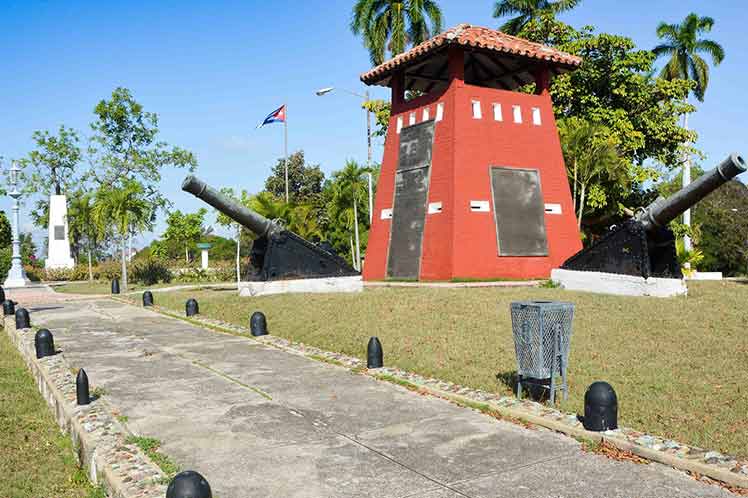During the three hours they remained in the eastern province of the country, Their Majesties completed an intense program in which the visit to the San Juan Memorial Park became a significant moment.
Nestled on the homonymous hill and in the very center of Cuban history, this urban site declared a National Monument recalls the glorious pages of the events that took place in the same place and equally evokes the mambises —name given to the Creole independence fighters— and to the US and Spanish military.
In the complex, located to the east of the city, Felipe and Letizia placed a laurel wreath before the sculpture that pays tribute to the Iberian soldiers who fell in the Spanish-Cuban-North American War, which ended in this setting in July 1898.
The monarchs toured the various monuments and inscriptions that detail those land confrontations, which sealed, with a peace without independence, almost 30 years of battle by the insurgents of the Liberation Army.
There you can see artistic reproductions in bronze consecrated to the victorious mambí, the unknown American soldier and the Spanish combatant, along with commemorative plaques and obelisks, cannons and field artillery pieces, all guarded by a pleasant natural environment.
THE TREE OF PEACE
On July 17, 1898, the capitulation of the Spanish garrison in Santiago de Cuba was signed under the ceiba tree called the Tree of Peace, in the midst of the ignominious claim of the United States command to prevent the local troops, commanded by General Calixto García, his entrance to the heroic city.
That fact clouded the glory of those momentous minutes, as did the self-interested interference of the United States, whose participation in the conflict, when the mambises had practically won the conflagration against Spain, was the prelude to the neocolonial and imperialist intervention that would come later.
As detained in time, with its enormous symbolic load and the contradictions of historical events, the exponents of this memorial offer visitors a synthesis of what happened on the island at the end of the 19th century and only two years after entering the Twentieth century.
The vestiges of the actions that took place there survive in each space of San Juan Park, pride of Santiago de Cuba for the decisive role it played in defending the city during the Spanish-Cuban-American War, a conflict that put an end to Spanish colonial rule. on the Caribbean island.
The visit of King Felipe VI and Queen Letizia Ortiz marked a very high level in a transcendence sedimented in the secular desire Cubans have for their independence.
(Taken from Prisma)










